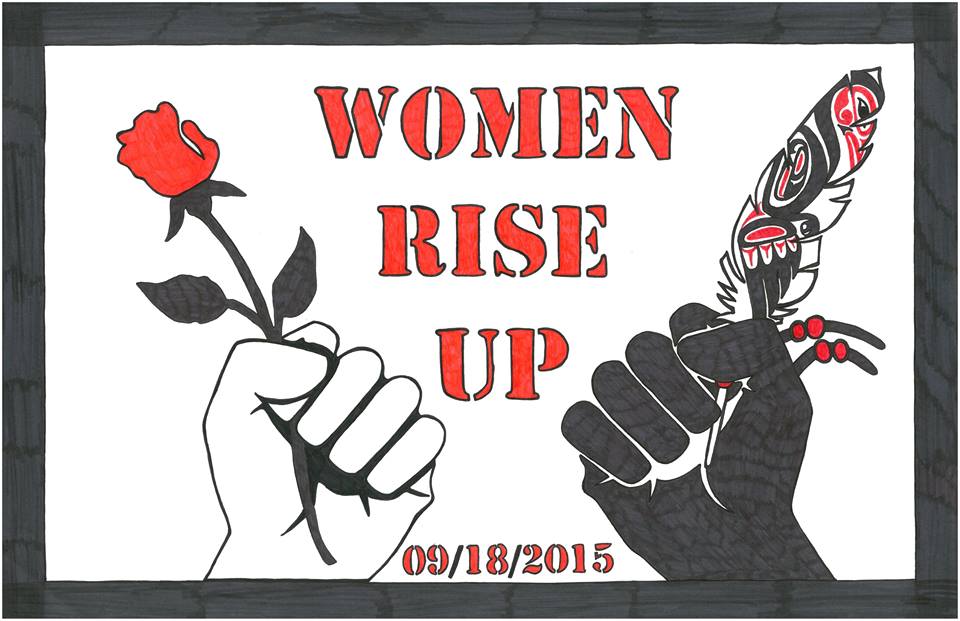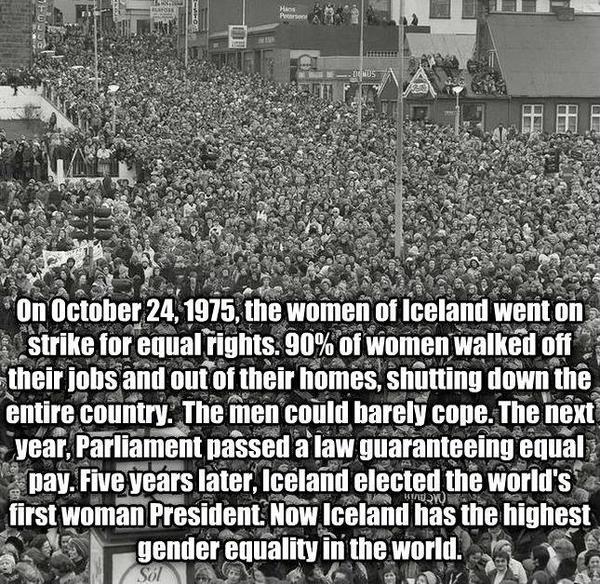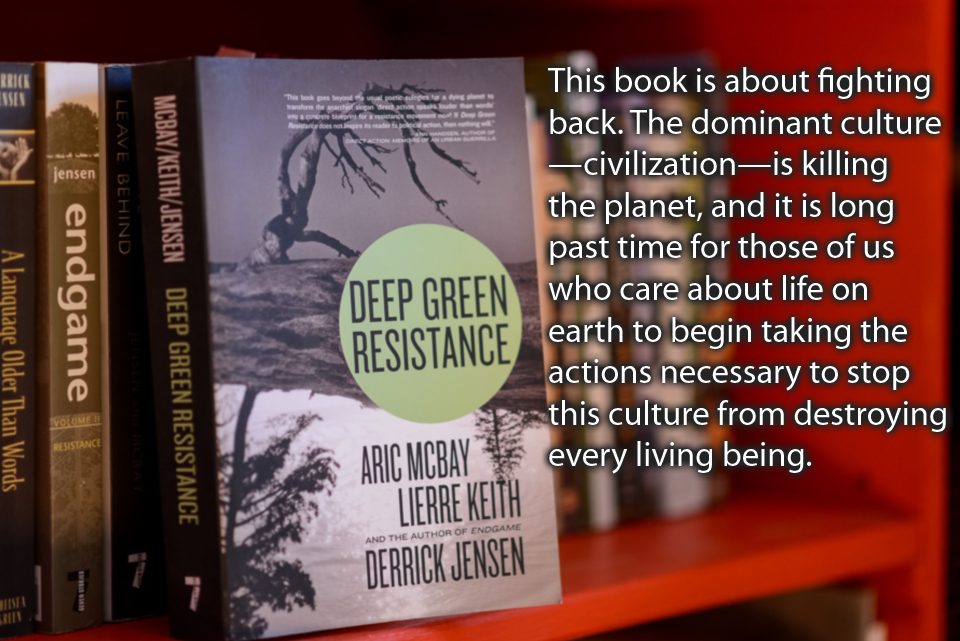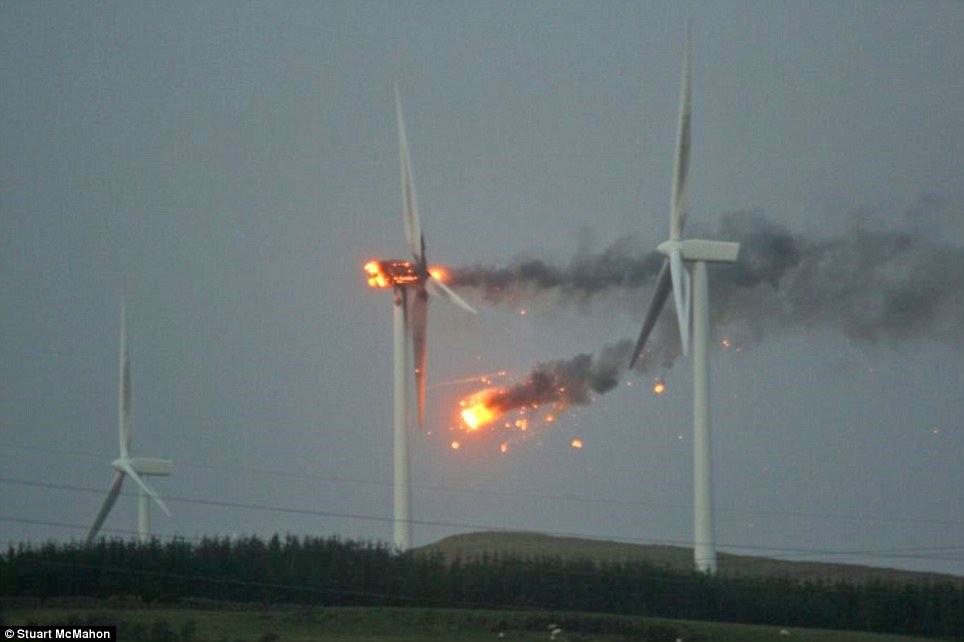
by DGR Colorado Plateau | Nov 9, 2015 | Male Supremacy, Movement Building & Support, Strategy & Analysis, Women & Radical Feminism
Artwork by Summer-Rain Bentham, Vancouver Rape Relief and Women’s Shelter
PART ONE: First steps for an effective fight-back
In the face of a worldwide crisis of male violence against women, radical feminists are preparing for a grassroots resurgence. This is the first in a series looking at effective strategies to take back women’s space and challenge male violence. Part Two is here.
By Tara Prema / Gender is War
Western patriarchy arrived on the Pacific Coast of North America less than two hundred years ago. In some places, it hasn’t completely eradicated traditional cultures. These notes come from unceded indigenous land on the frontlines of the white male supremacist invasion.
Here, as elsewhere, our enemies publicly intimidate women activists with impunity. We face death threats, violence, stalking, and censorship from both the right and the left. This war of words is part of the escalating global war on women.
Brutality is everywhere we look. In Canada, men have murdered or “disappeared” over twelve hundred indigenous women in the past decade. Currently, the rate of male-on-female homicide is rising sharply – in some communities, it has doubled in a few years. Rape, assault, and sex trafficking have reached an all-time high and they are still growing. The victims are women and girls of all ages, races, nationalities, and social classes; however, males inflict much greater violence on indigenous women and women of color.
At the same time, women-centered spaces are disappearing and our feminist networks are divided by infighting. Male supremacists of all stripes aim their rage at targets of opportunity. The backlash is here and it’s worse than expected.
It’s time for emergency measures. That means strategic decisions about which battles to fight, against whom, and on whose turf. When the goal is to stop men from killing women, we must teach and learn how to fight back to protect ourselves and each other. In order to do that, we must join together for mutual aid and avoid becoming casualties ourselves.
Most of us are traumatized. Part of healing involves getting to the point of responding to threats effectively and learning to deal with fear, anger, and helplessness in a healthy way – by taking back our power.
Strategic Action: an introduction

Our position is one of asymmetric struggle against entrenched systems of patriarchal violence and domination that go back thousands of years in the West. Our strategy is like a guerrilla resistance movement against an occupying force that seems unbeatable – at least at first.
Success in asymmetric conflicts lies in making sure we are prepared for effective, sustainable action that moves toward the goals we’ve chosen. Campaigns that lead nowhere drain our energy and expose us to our enemies. Successful symbolic actions are excellent for boosting morale and recruiting but they are not ends in themselves. The outcome of each action doesn’t have to be large, but the goal should be.
The most useful analysis of effective strategies in asymmetric conflicts comes from the book Deep Green Resistance: A Strategy to Save the Planet. DGR divides effective actions into three categories:
- shaping actions bring about the conditions where resistance is possible
- sustaining actions allow resistance to begin and continue
- decisive actions are capable of bringing down patriarchal institutions.
Creating Conditions and Capacity
Like any other human endeavor, whether building a house or planting a field, sustained grassroots action requires certain pre-conditions. For this movement, we must develop the capacity to reach out, organize, and defend ourselves and each other. There are dozens of ways that women around the world are creating the conditions to successfully challenge male domination and hold space for our sisters. For example:
- Women-only groups, gatherings, and discussions about liberation
- Naming the problem and naming the agent (male violence) in our speech and writing
- Anti-violence campaigns as part of healing and trauma recovery (and vice versa)
- Creating affinity groups and mutual aid networks
- Hosting women’s self-defense trainings
- Speaking out in public against male violence when it’s safe to do so
- Speaking privately with our sisters when it’s not
Strategic feminist actions are campaigns with achievable outcomes that lead toward a larger goal.
Networks of resistance are essential for our survival. Many of our networks are secret out of necessity. In the past year, we’ve seen radical women take back space by organizing our own conferences, like Radfem Riseup and Radfems Respond. Others are pushing back against censorship by mobilizing en masse, as fans of Meghan Murphy did when her publisher was threatened with boycotts.

When the goal is empowering a generation of women to fight male violence and rape, a crucial tactic is developing those skills — for example, by training women to teach others self-defense and protective strategies as the Warrior Sisters do. We might also consider public demonstrations that women are ready and able to physically fight men and win.
Creating a loud, visible culture of resistance is a longer-term goal that can lead to larger group mobilizations and decisive victories, like local uprisings to expel violent males from our communities. (It wouldn’t be the first time – see the Gulabi gang in India.)
The first task of a strategic activist is to find others who share the same values, in order to sustain our morale and bring ideas to action. When there’s no group nearby, we can travel to the nearest get-together, find or create radical feminist spaces online, and start our own groups.
- Most groups start with just a few people. Talk to strong female friends and acquaintances to find those who share the same goals and values.
- Launch a petition – either online or on paper. It can be a demand letter (“Fund women’s shelters!”) or a general call for support (“Yes I support organizing against male violence in my community”). The email addresses you collect become your outreach list.
- Start or join an online discussion forum or a private Facebook group for radical feminists in your region. Reach out, ask for advice, find out what other women are doing or would like to do.
- Call a meeting. The ones who show up are the organizing committee for future events and gatherings. (Make sure to set a time and place for the next meeting.)
- Host an event: a film screening, a book discussion, a street demo, or a radical feminist speaker from out of town. Keep that signup sheet handy.
- Prepare and discuss a basis of unity. Set out goals, guidelines, and responsibilities early on. Make sure there’s agreement on the group’s direction, how to screen new members, and how to end relationships with those who disrupt the group or don’t share its goals.
Often it’s not safe to organize. But we do it anyway – outside of the public eye, anonymously, or under a nom de guerre. Every woman who is publicly feminist has to deal with more than her share of hate. That’s why it’s so important to get together and watch each others’ backs. The goal of our enemies is to isolate and terrorize women in order to neutralize us. Don’t let them win.

- Take safety precautions, like keeping home and work addresses private.
- Follow security culture guidelines.
- Let other organizers know about any threats immediately.
- Post security people at public events.
- Accompany activists who are targeted.
- Inspect incoming packages, email messages, friend requests, and other invitations before opening or responding.
- Block hostile individuals on social media so they can’t see personal details, friends, and family.
- Use security measures (like data backups and two-step verification) on computers, websites, and email.
- Have an emergency plan and a bugout bag for leaving home in a hurry.
- Report credible threats to your group’s security coordinator. Police are often indifferent or abusive, but it may be useful to report the threat in case the target is forced to defend herself.
- Keep event locations secret until hours before, or disclose them only to registered participants.
Male violence has taken the lives of thousands of women while terrorizing millions more. We have choices: We can keep our heads down and hope the violence passes us by. We can spend time and energy on ineffective or counter-productive tactics. Or we can connect our networks and grow a coalition with the power to confront the killers and win.
Remember: Solidarity between women has survived repression for more than a millennium in some parts of the world. Male supremacists have done their worst and we are still here fighting back. Our reality and our wisdom will outlive the dominant culture’s delusions.
Parts Two (published here) and Three of this series will look at strategies for sustaining and decisive actions
We hope other radical feminists find this introduction useful, and we welcome your feedback as we draft the next chapters in this series.
by DGR Editor | Oct 19, 2015 | Strategy & Analysis, The Problem: Civilization
by Kim Hill / Deep Green Resistance Australia
A sustainable population ensures that the population of all other species who share the land where they live is also sustained. A population that causes the extinction of another species is not sustainable. Earth’s current human population causes the extinction of 200 species per day.
A sustainable population can endure indefinitely. This is the definition of sustainability. The number of people that can truthfully be called “a sustainable population” is not something that can be decided by popular vote, by argument, by economics, or by force. It is decided by the carrying capacity of the land on which it lives.
Ninety per cent of large fish in the ocean are gone. Ninety nine per cent of old growth forests, gone. That’s ninety nine per cent of the habitat that can sustain a human population. This means that as of now, a sustainable population of humans on this planet is one per cent of the population that a pre-industrial planet has sustained.
The civilization that most humans currently live in is not a sustainable habitat, as it requires stealing from the surrounding land to maintain itself. And as the civilized area grows to take over everything, and the land left available to steal from therefore shrinks to nothing, the whole project inevitably dies.
And the maximum possible population for any piece of land is not desirable for that population, as there is no chance for that population to survive in the face of disaster, environmental change, flood, or drought. An optimal population allows for some redundancies in providing for its needs. A population below carrying capacity will also be more peaceful, as it has everything it needs, and some to spare for others travelling or migrating. An optimal population doesn’t need to be constantly on guard to defend its landbase. Although this is conditional on the populations of surrounding areas also being optimal for their own landbases, rather than expanding and colonising.
A population’s ability to sustain itself isn’t a function of the number of people, but the relationship between the people and the land they live on. If the people exploit the land, taking more from it than they give in return, then regardless of the number of people, they will soon reach a point where the land no longer sustains them, and they either move on or starve to death. And in the present world, moving on means forcefully invading the land of others. Causing them to starve to death.
A population that has reciprocal relationships with the land, plants and animals that provide for their needs, and takes responsibility for the wellbeing of these others, may not even need to consider the question of population, or population may be regulated by an intuitive understanding of these relationships.
In the current context of global population overshoot, any strategy that addresses population as an isolated issue is bound to fail. Putting the cart before the horse.
It isn’t possible for a government that exists within the paradigm of economic growth to effectively address the issue of population.
Economic growth leads population growth. More people buy more stuff. Even if economic growth is possible without population growth, the economy still undermines its own foundations (quite literally in the case of mining taking over agricultural land) and will lead to whole populations of humans collapsing, regardless of the number of people.
So to see population as an issue that needs addressing is to miss the point.
Sustainability is not an abstract concept, or an optional extra for rich people to feel good about. Sustainability is by definition the capacity to continue to exist. If something is not sustainable, it will soon cease to exist. Any policy or argument that claims sustainability as a virtue without understanding this core meaning will benefit no-one, and only lead to a more chaotic collapse.
Often at policy discussions, someone will mention population and use the phrase “the elephant in the room” as if they’ve said something terribly clever and important, and done their bit to address the issue. I’ve never heard a proposal for any real action to either reduce global population or stop it from growing. Here’s some policy options: mass murder, forced sterilisation, a deadly virus, one-child policy, withhold food so that people starve. I can’t imagine anyone wanting to be on the receiving end of any of these, although there may be willingness to accept a one-child policy.
Stopping population growth is not in the interest of any government, especially not one elected on four-year term. Governments want as many people as possible – to grow their economy, fight their wars, work their industries, buy products, pay taxes.
Attempts to influence governments to instate policies on population are unlikely to be effective. Governments need to act in the interests of their corporate investors (or employers, or shareholders, depending on how you look at it). To influence a government requires influencing the corporations that control it.
A corporation has profit-making as its core business. No matter how convincing an argument may be, a corporation won’t act on it if its not profitable. And reducing population, the market for their products, can never be profitable.
Corporations can’t be challenged by legal means, as they have power over the legal system. So anyone wanting to challenge a corporation can only do so illegally.
By thinking strategically, and having the goal of preventing a corporation from doing business, its not all that hard to bring it down.
A corporation is a vulnerable thing. It can’t work without electricity, internet, phone connections, transport systems, workers, and money. If the supply of any one of these things is cut off, business stops.
By refusing to acknowledge the underlying causes of population growth, the debate on population is feeding and breeding the metaphorical elephants it so loves to talk about.
What I see is an overpopulation of elephants in the room.
Editor’s Note: Originally published March 7, 2013 on Stories of Creative Ecology

by DGR Colorado Plateau | Oct 12, 2015 | Strategy & Analysis
Book Review of Deep Green Resistance: A Strategy to Save the Planet
By Zoe Blunt
I first heard about Deep Green Resistance in the middle of a grassroots fight to stop a huge vacation-home subdivision at a wilderness park on Vancouver Island. Back then, it hadn’t really occurred to me that a book on environmental strategy was needed. Now I can tell you, it’s urgent.
Deep Green Resistance (DGR) made me a better strategist. If you’re an activist, then this book is for you. But be warned: at 520 pages (plus endnotes), it’s not light reading. Quite the opposite — DGR dares environmental groups to focus on decisive tactics rather than mindless lobbying and silly stunts.
“This book is about fighting back. And this book is about winning,” author Derrick Jensen declares in the preface to this three-way collaboration with Lierre Keith and Aric McBay.
Keith, author of The Vegetarian Myth, opens the discussion with an analysis of why “traditional” environmental action is self-defeating. For those who’ve read Jensen’s Endgame, or who have experienced the frustration of born-to-lose activism, Keith’s analysis hits the nerve.
The DGR philosophy was born from failure. In a recent interview, Jensen recounts a 2007 conversation with fellow activists who asked, “Why is it that we’re doing so much activism, and the world is being killed at an increasing rate?” “This suggests our work is a failure,” Jensen concludes. “The only measure of success is the health of the planet.”
If we keep to this course, as Keith points out, the outcome is extinction: the death of species, of people, and the planet itself. Environmental “solutions” are by now predictable, and totally out of scale with the threat we’re facing. Cloth bags, eco-branded travel mugs, hemp shirts, and recycled flip-flops won’t change the world. Wishful thinking aside, they can’t, because they don’t challenge the industrial machine. It just keeps grinding out tons of waste for every human on the earth, whether they are vegan hempsters who eat local or not. So these “solutions” amount to fiddling while the world burns.
Aric McBay, organic farmer and co-author of What We Leave Behind, says Deep Green Resistance “is about making the environmental movement effective.”
“Up to this point, you know, environmental movements have relied mostly on things like petitions, lobbying, and letter-writing,” McBay says. “That hasn’t worked. That hasn’t stopped the destruction of the planet, that hasn’t stopped the destruction of our future. So the point is if we want to be effective, we have to look at what other social movements, what other resistance movements have done in the past.”
Keith notes that a given tactic can be reformist or radical, depending on how it’s used. For example, we don’t often think of legal strategies as radical, but if it’s a mass campaign with an “or else” component that empowers people and brings a decisive outcome, then it creates fundamental change.
“Don’t be afraid to be radical,” Keith advises in a recent interview. “It’s emotional, yes; this is difficult for people, but we are going to have to name these power structures and fight them. The first step is naming them, then we’ve got to figure out what their weak points are, and then organize where they are weak and we are strong.”
Powerful words. But by then I was desperate for a blueprint, a guidebook, some signposts to help break the deadlock in our campaign to save the park. Two hundred pages into DGR, we get down to brass tacks, and find out what strategic resistance looks like.
I don’t know what I was expecting, but it wasn’t a guerrilla uprising.
To be clear, Deep Green Resistance is an aboveground, nonviolent movement, but with a twist: it calls for the creation of an underground, militant movement. The gift of this book is the revelation that strategies used by successful insurgencies can be used just as successfully by nonviolent campaigns.
McBay argues convincingly that it’s the combination of peaceful and militant action that wins. He emphasizes that people must choose between aboveground tactics and underground tactics, because trying to do both at once will get you caught.
“The cases of Dr. Martin Luther King Jr. and Malcolm X exemplify how a strong militant faction can enhance the effectiveness of less militant tactics,” McBay writes. “Some presume that Malcolm X’s ‘anger’ was ineffective compared to King’s more ‘reasonable’ and conciliatory position. That couldn’t be further from the truth. It was Malxolm X who made King’s demands seem eminently reasonable, by pushing the boundaries of what the status quo would consider extreme.”
What McBay calls “decisive ecological warfare” starts with guerrilla movements and the Art of War. Guerrilla fighting is all about asymmetric warfare. One side is well-armed, well-funded, and highly disciplined, and the other side is a much smaller group of irregulars. And yet sometimes the underdog wins. It’s not by accident, and it’s not because they are all nonviolent and pure of heart, but because they use their strengths effectively. They hit where it counts. The rebels win the hearts and minds and, crucially, the hands-on support of the civilian populace. That’s what turns the tide.
McBay notes, for example, that land reclamation has proven to be a decisive strategy. He argues that “aboveground organizers [should] learn from groups like the Landless Workers’ Movement in Latin America.” This ongoing movement “has been highly successful at reclaiming ‘underutilized’ land, and political and legal frameworks in Brazil enable their strategy,” McBay adds.
Imagine two million people occupying the Tar Sands. Imagine blocking or disrupting crucial supply lines. Imagine profits nose-diving, investors bailing out, brokers panic-selling, and the whole top-heavy edifice crashing to a halt.
The Landless Workers’ Movement operates openly. Another group, the Underground Railroad, was completely secret. Members risked their lives to help slaves escape to Canada. A similar network could help future resisters flee state persecution. Those underground networks need to form now, McBay says, before the aboveground resistance gets serious, and before the inevitable crackdown comes.
DGR categorizes effective actions as either shaping, sustaining, or decisive. If a given tactic doesn’t fit one of those categories, it is not effective, McBay says. He emphasizes, however, that all good strategies must be adaptable.
To paraphrase a few nuggets of wisdom:
Stay mobile.
Get there first with the most.
Select targets carefully.
Strike and get away.
Use multiple attacks.
Don’t get pinned down.
Keep plans simple.
Seize opportunities.
Play your strengths to their weakness.
Set reachable goals.
Follow through.
Protect each other.
And never give up.
Guerrilla warfare is not a metaphor for what’s happening to the planet. The forests, the oceans, and the rivers are victims of bloody battles that start fresh every day. Here in North America, it’s low-intensity conflict. Tactics to keep the populace in line are usually limited to threats, intimidation, arrests, and so on.
But the “war in the woods” gets real here, too. I’ve been shot at by loggers. In 1999, they burned our forest camp to the ground and put three people in the hospital. In 2008, two dozen of us faced a hundred coked-up construction workers bent on beating our asses.
Elsewhere, it’s a shooting war. Canadian mining companies kill people as well as ecosystems. We are responsible for stopping them. We know what’s happening. Failing to take effective action is criminal collusion.
Wherever we are, whatever we do, they’re murdering us. They’re poisoning us. Enbridge, Deepwater Horizon, Exxon, Shell, Suncor and all their corporate buddies are poisoning the air, the water, and the land. We know it and they know it. Animals are dying and disappearing. There will be no end to the destruction as long as there is profit in it.
This work is scary as hell. That’s why we need to be really brave, really smart and really strategic.
We have strengths our opponents will never match. We’re smarter and more flexible than they are, and we’re compelled by an overwhelming motivation: to save the planet. We’re fighting for our survival and the survival of everyone we love. They just want more money, and the only power they know is force.
As Jensen says, ask a ten-year-old what we should do to stop environmental disasters that are caused in large part by the use of fossil fuels, and you’ll get a straightforward answer: stop using fossil fuels. But what if the companies don’t want to stop? Then make them stop.
Ask a North American climate-justice campaigner, and you’re likely to hear about media stunts, Facebook apps, or people stripping and smearing each other with molasses. Not to diss hard-working activists, but unless they are building strength and unity on the ground, these tactics won’t work. They’re not decisive. They’re just silly.
Of course, if the media stunts are the lead-in to mass, no-compromise, nonviolent action to shut down polluters, I’ll see you there. I’ll even do a striptease to celebrate.
© 2012 Zoe Blunt

by DGR Editor | Oct 10, 2015 | ANALYSIS, Mining & Drilling
by Kim Hill
Ten things environmentalists need to know about renewable energy:
1. Solar panels and wind turbines aren’t made out of nothing. They are made out of metals, plastics, chemicals. These products have been mined out of the ground, transported, processed, manufactured. Each stage leaves behind a trail of devastation: habitat destruction, water contamination, colonization, toxic waste, slave labour, greenhouse gas emissions, wars, and corporate profits. Renewables can never replace fossil fuel infrastructure, as they are entirely dependent on it for their existence.
2. The majority of electricity that is generated by renewables is used in manufacturing, mining, and other industries that are destroying the planet. Even if the generation of electricity were harmless, the consumption certainly isn’t. Every electrical device, in the process of production, leaves behind the same trail of devastation. Living communities—forests, rivers, oceans—become dead commodities.
3. The aim of converting from conventional power generation to renewables is to maintain the very system that is killing the living world, killing us all, at a rate of 200 species per day. Taking carbon emissions out of the equation doesn’t make it sustainable. This system needs not to be sustained, but stopped.
4. Humans, and all living beings, get our energy from plants and animals. Only the industrial system needs electricity to survive, and food and habitat for everyone are being sacrificed to feed it. Farmland and forests are being taken over, not just by the infrastructure itself, but by the mines, processing and waste dumping that it entails. Ensuring energy security for industry requires undermining energy security for living beings (that’s us).
5. Wind turbines and solar panels generate little, if any, net energy (energy returned on energy invested). The amount of energy used in the mining, manufacturing, research and development, transport, installation, maintenance and disposal of these technologies is almost as much—or in some cases more than—they ever produce. Renewables have been described as a laundering scheme: dirty energy goes in, clean energy comes out. (Although this is really beside the point, as no matter how much energy they generate, it doesn’t justify the destruction of the living world.)
6. Renewable energy subsidies take taxpayer money and give it directly to corporations. Investing in renewables is highly profitable. General Electric, BP, Samsung, and Mitsubishi all profit from renewables, and invest these profits in their other business activities. When environmentalists accept the word of corporations on what is good for the environment, something has gone seriously wrong.
7. More renewables doesn’t mean less conventional power, or less carbon emissions. It just means more power is being generated overall. Very few coal and gas plants have been taken off line as a result of renewables.
8. Only 20 per cent of energy used globally is in the form of electricity. The rest is oil and gas. Even if all the world’s electricity could be produced without carbon emissions (which it can’t), it would only reduce total emissions by 20 per cent. And even that would have little impact, as the amount of energy being used globally is increasing exponentially.
9. Solar panels and wind turbines last around 20-30 years, then need to be disposed of and replaced. The production process, of extracting, polluting, and exploiting, is not something that happens once, but is continuous and expanding.
10. The emissions reductions that renewables intend to achieve could be easily accomplished by improving the efficiency of existing coal plants, at a much lower cost. Given that coal or gas plants are required for back-up of all intermittent renewables, this shows that the whole renewables industry is nothing but an exercise in profiteering with no benefits for anyone other than the investors.
Further Reading:
Green Technology and Renewable Energy
Ten Reasons Intermittent Renewables (Wind and Solar PV) are a Problem
The Myth of Renewable Energy
A Problem With Wind Power
Green Illusions: The Dirty Secrets of Clean Energy and the Future of Environmentalism
In China, the true cost of Britain’s clean, green wind power experiment: Pollution on a disastrous scale
Originally published on Stories of Creative Ecology

by DGR Colorado Plateau | Oct 8, 2015 | Gender, Repression at Home
By Tara Prema / Gender Is War
It’s a plot filled with anonymous denunciations, secret meetings, betrayal, dissidents, blacklists and infiltrators. For those just tuning in, this shitshow is the latest infighting on the left, where ideological purity and individual identity are all the rage – literally. Welcome to a new era of #LeftFail, where identity politics trumps everything, including strategy.
When we subtract the drama, what’s happened is that a couple of social justice groups (mostly hyper-moral ultra-leftist white college kids) has launched a campaign to blacklist people who disagree with their answer to a philosophical question. It’s not a question about the nature of capitalism or justice or exploitation or some other relevant topic, though. The question that’s tying the left in knots is: “What is a woman?”
If you answer, “An adult female human,” you could be blacklisted.
The correct answer nowadays is, “Anyone who identifies as a woman.”
This begs the question: “What does it mean to ‘identify’ as a woman?’”
The correct answer is, “To feel like a woman; to feel as if one is a woman.”
If you ask what it means to “feel like a woman,” there is no coherent answer, just hisses of:
“Transphobe!”
So what is a transphobe?
Anyone who speaks about women’s biology, their physical sex, the power to give birth and nurse, for example.
Anyone who wants to abolish gender roles, meaning the stereotypes of how boys and girls are expected to behave, and how that affects us into adulthood.
Any person or group who defines “woman” as “adult human female.” That is, someone born female, with female biology.
The list includes midwives, traditional communities, radical feminists, and many others. It includes peace activist Cindy Sheehan and comedian Roseanne Barr. It includes Deep Green Resistance.
Radical feminists find that gender is a ridiculous set of oppressive stereotypes that have nothing to do with biology, rather than seeing gender as a spectrum or a binary or some kind of fluid. Gender stereotypes dictate that men are masculine and dominant, and women are feminine and submissive, and that is what you are. For this, academics and activists alike have denounced and blacklisted them.
There is a difference between a person’s sex and his or her gender. Radical feminists believe that sex is innate – it’s the biology we are born with, our DNA and secondary sex characteristics, like breasts and testes. Sex is in-born, and gender is constructed – that is, imposed on us by societal stereotypes (what we used to call “sex roles”).
On the other hand, genderists believe that gender is innate somehow – we are born with the stereotypes of being frilly or macho already in our heads. Sex, therefore, is constructed by means of surgery and hormones.
Genderists: If your internal sense of pink lace or ball games doesn’t match your genitalia, you need opposite-sex hormones and an operation! Or at least a whole new set of clothes, makeup, and a name change. And a million bucks. And a reality show. And a magic mirror to whisper flattering things.
Midwives are being told they can’t use the term “women” when referring to those of us who give birth and nurse children. Because that is transphobic. Midwives face blacklisting by their own professional association for refusing to call mothers “birthing parents.”
A traditional matrilineal community was harassed about having women’s circles until they started holding them in secret, away from the white dudes.
White dudebro masters student arriving at a traditional indigenous encampment: “Hey, you’re doing gender wrong. Let me mansplain to you about why this postmodern theory I just read about is superior to your traditional teachings passed on for hundreds of generations. Hey, where you going?”*
Anti-feminists have infiltrated radical feminist groups to spy out where their events are being held, so they can disrupt them by barging in or by phoning in death threats. In one case, a police informant joined a west coast radical environmental group and used the wedge issue of gender identity politics to start a faction fight that ended only when everyone quit.
And now we find ourselves watching as mass media celebrate transwomen as the epitome of womanhood. And we find we are ostracized by the gender cheerleaders at universities, conferences, and within the environmental movement.
Stop the Frack Attack is the most recent spasm of horizontal hostility on the environmental left. This anti-fracking coalition includes radical groups like Rising Tide, which has staked its moral purity on denouncing those who consider biological sex to be a material human condition. It does not include Deep Green Resistance, a group led by radical feminists, because – we are told – radical feminists are the evil “cis” oppressors. Note that Christian zealots and rightwing nuts with guns are not being targeted here. Feminists are the biggest threat and therefore deserve to be bashed, according to some trans advocates.
Along with the radicals, STFA includes the Idaho Conservation League, the United Christian Church, and the Denton Stakeholder Drilling Advisory Group. Did STFA’s central committee interrogate these good citizens on where they stand on the burning question of “What is a woman?” Are we to assume they all agree 100% that the categories of male and female no longer exist, except as semantics?
And if the Denton Stakeholders issued a public statement that Caitlyn Jenner has only changed clothes and makeup, not sex – would Stop the FA excommunicate them too?
Or is shunning a punishment reserved only for feminists?
And – final question – what the hell does this have to do with fracking?
One thing for sure: the oil and gas executives are laughing all the way to the bank. They know what some of us don’t – that infighting is like civil war: the only winners are the vulture capitalists.
* Different cultures around the world have different teachings about sex and gender. Many cultures have a designation outside of “male” and “female,” such as two-spirit and hijira. Many societies do not. Traditionally, some social groups are egalitarian, some are patriarchal, and some are matriarchal. They all have their own definitions of “who is a woman.” Not to speak for them, but those definitions don’t appear to be based on either radical feminism or postmodern theories about gender.







